It’s that time of year again, when it’s difficult to avoid certain songs. Like “I Saw Mommy Kissing Santa Claus.” The tune, written by British lyricist Tommy Connor and performed by 13-year-old Jimmy Boyd, reached number one on the Billboard charts in December 1952.
Since then, dozens of artists including Andy Williams, The Four Seasons, The Jackson 5, John Mellencamp, John Prine and Twisted Sister, have recorded versions of it. Under which plant did that kiss happen? Mistletoe, of course. Most of us don’t pause to ponder the plant, but we understand the tradition. References to mistletoe continue in nearly every romantically-themed holiday song, and more than a few holiday specials.
Kissing someone under this leafy evergreen with its waxy, white berries is a cherished Christmas tradition, but that’s only a modern take on a plant laced with lore.
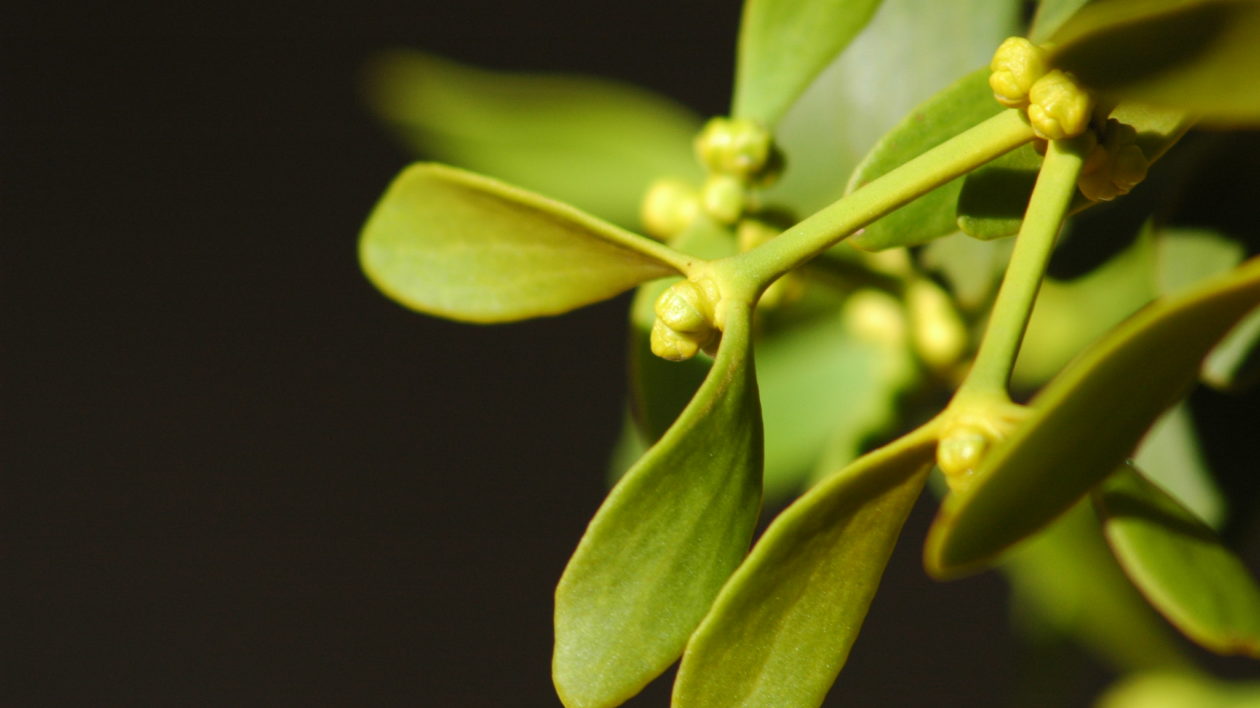
The Plant
Perhaps kissing is strongly associated with mistletoe because the plant basically “kisses” its host. Mistletoe is a “hemi-parasite”, which attaches to a tree or shrub using a connective appendage called a “haustorium”, through which it sucks water and nutrients.
It’s hemi- or half-parasitic because many species of mistletoe also conduct photosynthesis, which, in some cases, allows the plant to live on its own, too.
There are 1,300 to 1,500 mistletoe species in the world, most living in tropical or subtropical regions. Australia, for instance, has 85 mistletoe species. By contrast, there’s only one native to the British Isles, but it is the one we see around the holidays.
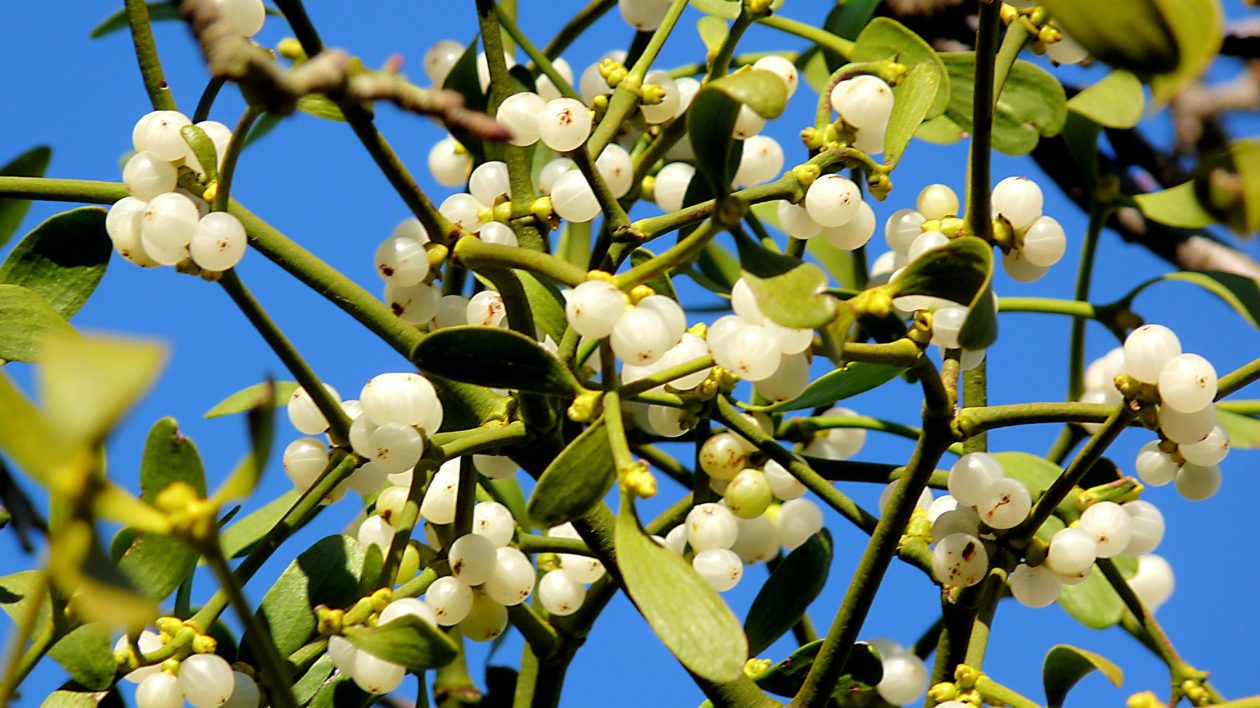
This species is Viscum album, known as the European mistletoe or common mistletoe. It is also the only species of mistletoe found over most of Europe, though a separate species, Viscum cruciatum is found in southwestern Spain and southern Portugal (and parts of Africa). The European mistletoe was introduced to the United States in 1900.
It has a smooth-sided oval leaf with clusters of two to six berries, as compared to Eastern mistletoe, Phoradendron leucarpum, which is native to North America, but has shorter, wider leaves and larger clusters of berries.
All mistletoe species are parasitic and all eventually causing the death of their host. They typically land on a host thanks to a bird that has eaten a sticky mistletoe seed, then either poops it or rubs it onto a tree or shrub.

Though mistletoe might sound like an undesirable plant because it kills trees, some species are important keystone species in their habitats. In addition to birds, deer, elk, squirrels and porcupines seek mistletoe berries during the late fall when other food sources become scarce.
Three species of hairstreak butterflies in the United States depend on mistletoe. They lay their eggs on the leaves. When the caterpillars hatch, they eat the leaves. Once a butterfly, they feed on mistletoe nectar, as do honeybees and other native bees.
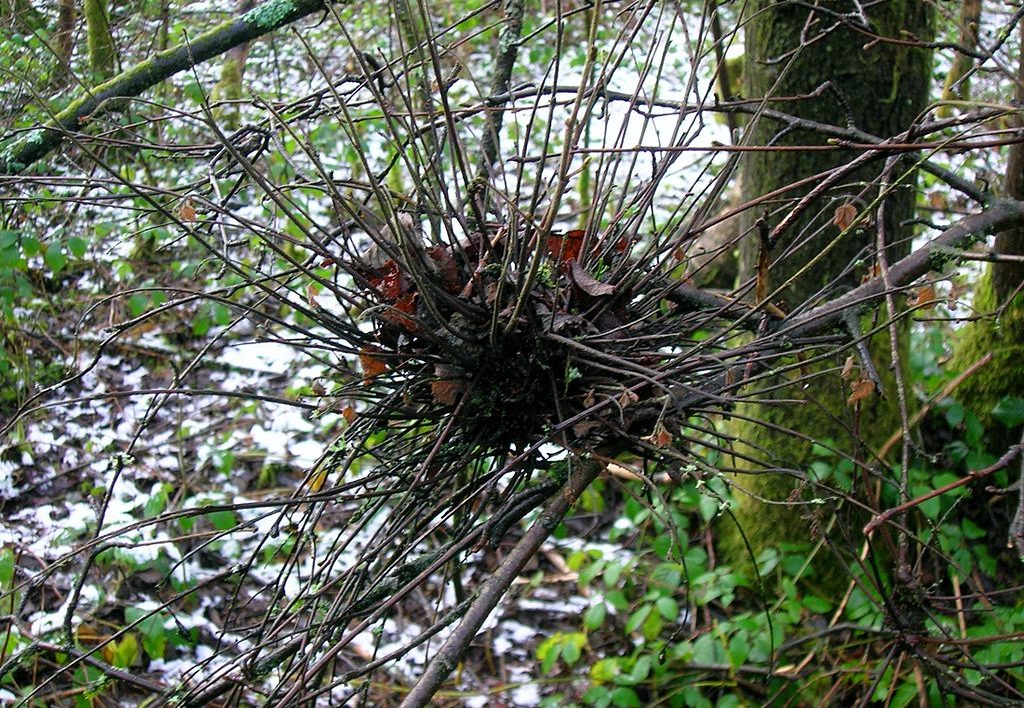
Evolution of a Tradition
Ancient Greece is the earliest known culture to venerate mistletoe. The Greeks referred to its white berries as “oak sperm” and considered it a symbol of male fertility.
In Greek mythology, Aeneas carried mistletoe to protect himself on his journey to the underworld and ensure his return.
The Druid priests in ancient Celtic times performed the “ritual of oak and mistletoe.” The Druids considered it a sacred plant with great medicinal and mythical powers. Upon finding the plant, which usually grows on a host tree or shrub, which was rare in Gaul and even rarer on an oak tree, the Druids sacrificed two white bulls and feasted under the oak.
Then one of the priests climbed the tree to harvest the mistletoe, a potion from which they believed would make sterile animals give birth and counteract any poison, though in truth, mistletoe is toxic to people.
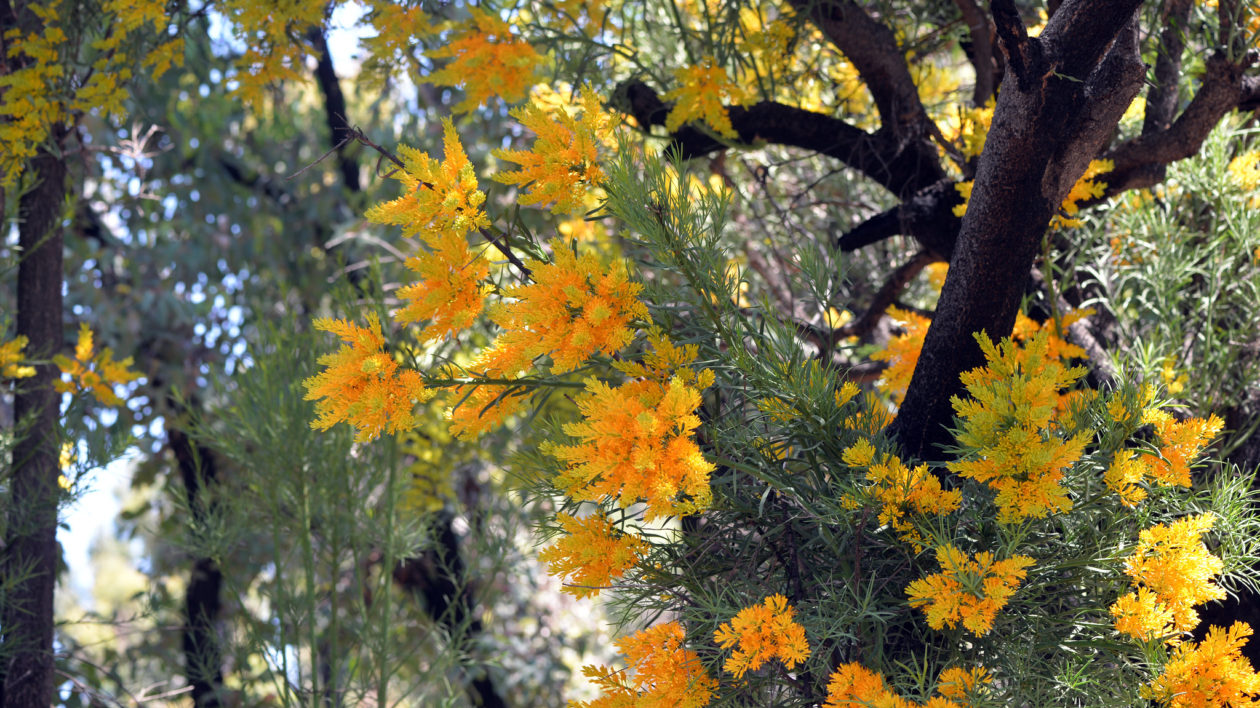
In Norse mythology, the god Loki tricked the blind god Hodur into killing Loki’s twin brother, Baldur, with an arrow made of mistletoe wood. The tears of Frigga, their mother, are said to be the berries of mistletoe, which became a symbol of love in Scandinavia. There are many variations of this tale, which became the basis of the custom of calling a truce if two enemies found themselves under mistletoe.
Mistletoe also symbolized peace, love and understanding to the Romans, who hung it over doorways.
During the annual Saturnalia celebration, which included giving gifts, a public banquet and a sacrifice at the Temple of Saturn, god of wealth, agriculture, liberation and renewal.
Gambling was allowed, and masters served their slaves at the feast. The idea of kissing one’s heart throb under mistletoe was first observed during Saturnalia.
From early Christianity through the Middle Ages, decorative mistletoe was used as a sign of vitality and fertility during the Christmas holiday period, perhaps because it remained green though its host tree had dropped its leaves.
The act of kissing under the mistletoe as a Christmas tradition started in England in the 1700s among the servant class. By the reign of Queen Victoria in the 1800s, it was firmly established in both England and the United States. The saying goes, if two kiss under mistletoe, they shall be wed, and feuding spouses who kiss under it shall make up, notions that clearly stem from early non-Christian customs that continue today.
Most of us consider mistletoe another bit of holiday decoration, if we consider it at all. But those earworm songs about Mommy and Santa Claus have their roots in ancient myth and even natural history, like so many cherished holiday traditions.
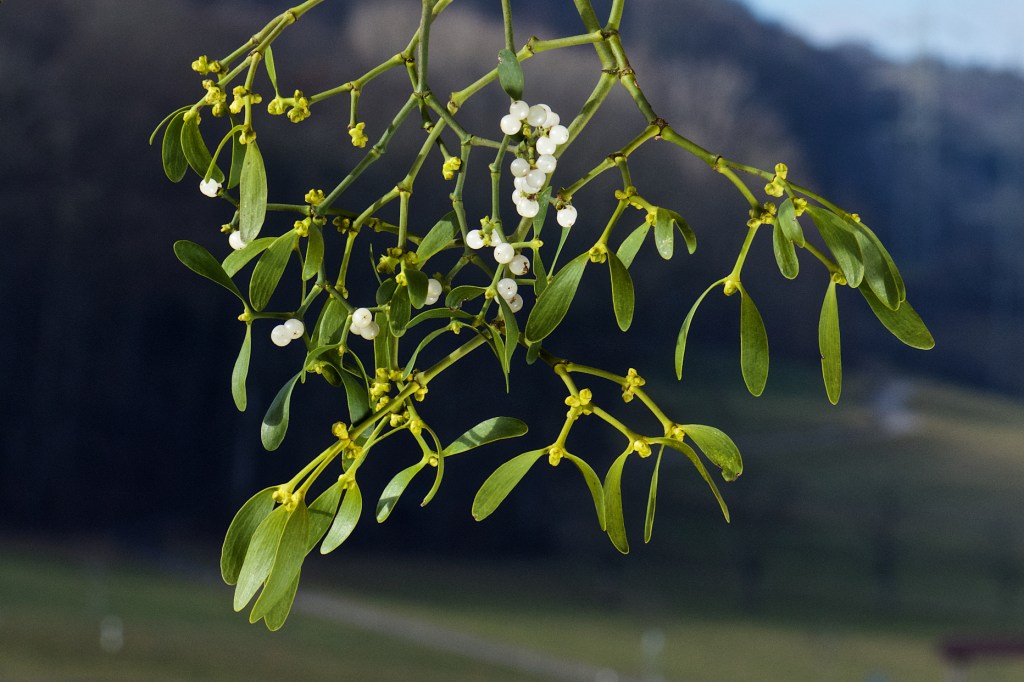



Yes, the druids gathered mistletoe because it was used for centuries as a medicine plant in many ways, considered “good for everything”. Their knowledge was deliberately stamped out. It is indeed used today in cancer treatments and is once again being studied for other medicinal uses (viscum album, the european type, not phoradendron leucarpum, the american type). Specifically–it is toxic to humans if you eat the berries, don’t do that! But let’s not continue the ignorance about this wonderful plant and its many uses.
I knew there was a past to the tradition and wanted to know where it came from… I was reading “Cold Mountain” where it talked about mistletoe clinging to the oaks and happened to have my chromebook handy. Thank you for your info.
Renae
To answer Casey’s question, yes, there is a species of mistletoe in the Yosemite Valley that grows on black oak. Apparently, early Miwoks used its rootball for a game played with a stick. They also boiled the leaves in a tea to treat rheumatism, epilepsy, mental illness and to induce abortions. Nowadays, local Native Americans only use it at Christmas as decoration, like everyone else.
To Rick’s comment about the typo, “earworn” instead of “earworm”. I did not write that concluding paragraph. It appeared in the editing process. Good catch though.
Gary is correct. Wrens, chickadees and nuthatches are cavity nesters. Thanks for pointing that out.
Interesting about mistletoe being high in progesterone. I did not find any reference to that. Actually, ingesting most mistletoes is toxic to humans.
I fondly remember gathering mistletoe from trees in South Carolina to make Christmas gifts in Ohio.